Opinion Article
Orientation in Space
Independent Scientist, Novi Sad, Serbia
*Corresponding author: Branko V. Miskovic, Independent Scientist, Atar 16, 21209 Bukovac, Novi Sad Serbia, E-mail: brankovmiskovic@yahoo.com
Received: January 29, 2024 Accepted: February 23, 2024 Published: March 11, 2024
Citation: Miskovic BV. Orientation in Space. Int J Phys Stud Res. 2024; 6(1): 104-109. doi: 10.18689/ijpsr-1000117
Copyright: © 2024 The Author(s). This work is licensed under a Creative Commons Attribution 4.0 International License, which permits unrestricted use, distribution, and reproduction in any medium, provided the original work is properly cited.
Abstract
Aim: The solution of one of the crucial questions in physics.
Study design: Comparison and relation of known physical facts.
Methodology: Exhaustive reexamination of these relations.
Study duration: Throughout the author’s working life.
Results: Instead of the absolute or arbitrary orientation, the local preferential frames are finally affirmed and applied.
Keywords: Absolute, Relative, Local, Frame, Motion
Introduction
Physical laws describe the object interactions, in the form of the forces or energies determined by the kinematical quantities. The material bodies or particles, as the objects, represent the concentrated amounts of respective substantial quantities. The static, kinetic and dynamic forces are respectively determined by the positions, motions and accelerations of such objects [1,2]. The three mentioned kinematical quantities need be determined in a relevant reference frame, connected to an evident material body. With respect to the perpetual mutual motions, rotations and revolutions of all celestial bodies, the relevant reference is very questionable. Not only that such a frame is due to determine all the forces and energies, but also the object trajectories. Though theoretically simplest, the absolute reference frame has not been identified. At least approximately, the local technical orientation usually concerns Earth. Even after substitution of the terrestrial by solar orientation, it is not adequate in the wider cosmic space, out of the solar planetary system.
With respect to the limited former sights, the initial problem took the cosmological sense. Irrespective of the physical laws, a comparative body played the role of the cosmic center. In the first view, Earth seemed to be such a center. However, the paths of the other planets in this frame are extremely complex and illogical. Instead of the irregular planetary paths in relation to Earth, their concentric, circular or slightly elliptical orbits around Sun, obeying the three Keppler’s rules, were the bases for reliable formulation of the law of gravitation. On the other hand, such Moon’s orbit around Earth appears similarly complex in relation to Sun. Overlooking this fact, the traumatic transition from the narrower into wider references gave the impression of a great scientific revolution. In the final instance, none of these two references is applicable in the wider cosmic space, pointing to the predominant material surroundings, in the given spatial domain or respective level of observation.
A similar problem appeared in electrodynamics. Though the terrestrial orientation satisfies the usual technical practice, the reference of light propagation in the wider space is problematic. In the aim of confirmation of the expected absolute reference, connected to the rigid vacuum medium, Michelson made the known experiment, proposed by Maxwell. The difference of the two relative speeds of light in the longitudinal and transverse directions in relation to the orbiting Earth had been calculated in advance. However, the negative practical result pointed to the local preferential frame, connected to Earth. With respect to the traumatic Copernican U-turn, this fact has not been noticed nor emphasized. The later more accurate results, in amount of a few percent of the calculated value, have not been explained but are tacitly neglected or even forgotten by the time. Instead of the preferential local frames, the arbitrary orientation is proposed and imposed, as the provisory alternative at least.
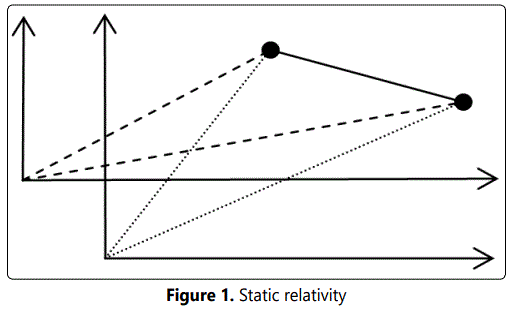
In the absence of a unique reliable frame, the attention is paid to the mutual relations between two arbitrary frames, which needed equivalence is expressed by the principle of relativity. However, this principle is strictly satisfied by the static forces only, dependent on mutual distance of two interacting objects (Fig. 1), as the difference of their positions in the two frames. The kinetic force in Ampere’s law depends on the speed product [1], inexpressible by the relativity. Including one speed into the field expression, the relativity concerns mutual motion of the magnet and conductor. The dynamic forces, without the other explicit object, are especially problematic. The relativity must be thus restricted to uniform rectilinear motion. The obtained relations of the distances and times pushed back the orientation itself, and the geometrically expressed gravitation did not at all exceed the restrictions of relativity. The two unresolved problems are thus shadowed by the two useless theories.
Restricted Relativity
With implicit idea of relativity, Newton made the wellknown experiment for checking the needed frame equivalence. Rotating a container with water, he observed the radial forces manifest by the concave water surface. Comparing the stationary and transitional kinematical states, he reliably excluded the force dependence on the container rotation, but referred it to the undetermined wider surroundings. In the absence of the precise answer, he assumed a unique and rigid cosmic frame. Not being theoretically determined nor practically confirmed, this frame is the subject for the further reexamination.
Looking for a better solution, E. Mach asked the known double question. Would the water surface shape be influenced by the more massive container, or even by the rotating cosmos? The former part suggested the hierarchy and fractional sum of more local frames, but latter one expected the equivalence of the two extreme frames, already denied by Newton. However, the known fact calls in question the former thesis at least. The forces acting on its satellites do not depend on the rotation of Earth, as the container carrying their orbits around Sun.
A similar result Faraday obtained in electrodynamics. Rotating a conducting disc in the front of cylindrical magnet, he noticed the kinetic induction [1] between the sliding contacts placed in the center and rim of the disc (Fig. 2). However, the magnet rotation was ineffective at all, so that the common rotation gave the same former result. Touching the magnet by the contacts directly, its conducting body took over the role of the disc, with the same induction. Alike the celestial case, this one does not satisfy the relativity. Unlike the former example, not strictly reconsidered, this one can be explained.
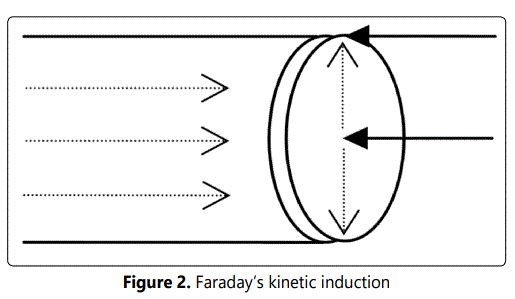
Figure 2. Faraday’s kinetic induction The relativity here concerns the difference of the kinetic and dynamic inductions (1). The former of them is ascribed to the object motion (v) through the present magnetic field (B).
The speed of the causing electricity is implicitly contained in the field expression. On the other hand, the speed (U) of the field itself determines the dynamic induction.
v × B + B × U = (v – U) × B (1)
However, the objects and domains of appearance of the two inductions essentially distinguish. Unlike the kinetic induction affecting the moving electricity only, dynamic one affects all the present electricity. Moreover, the former induction concerns all the object motion perpendicular to the field, but latter one is also conditioned by the field gradient [1]:
∇ × E = U · ∇B = – ∂B/∂t (2)
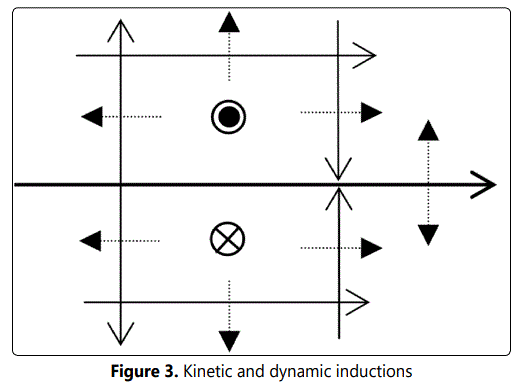
Figure 3 compares the two EM inductions. The current in the central conductor is followed by the circular magnetic field. The transverse motion of a parallel or perpendicular object conductor causes the kinetic induction. Such motion of the carrier, along the field gradient, causes the dynamic induction in the parallel objects only. In the transverse (or circular directions Fig. 2), the field gradient equals to naught. Similar relation may be ascribed to the gravitation on the celestial orbits. The field rotations transverse to their gradients are irrelevant.
Light Propagation
All waves, from the mechanical, via sound up to EM ones, as the medium disturbances, propagate at the speeds determined by the elasticity and inertia of respective media [1]. Unlike the former two waves, concerning matter consisting of the particles, the last wave type also propagates through the vacuum medium. Though not explain this medium, the waves demand its existence. The addition of matter, increasing the medium density, causes the slower propagation. The explanations of various physical forces [2] finally rely on respective media. Though light consists of photons, as the energetic particles, it propagates at the wave speed, determined by Maxwell’s relation (9b). The negation of vacuum medium – by special relativity, does not offer any other explanation of the above phenomena. The propagation of each disturbance is referred to the medium, irrespective of motion of passive observers or their instruments.
The same speed of light relative to the moving devices, or to their formal frames and passive observers, cannot be understood nor explained. Michelson’s result, just being referred to Earth, can be generalized to the other celestial bodies, but not at all to the arbitrary (inertial) frames. Apart from such the exaggerated generalization of the result, this opinion may be also conditioned by some cosmic relations [3]. Owing to the cosmic expansion, two bodies are mutually moving away at the speed (v) proportional with their distance. Despite this fact, the light starts from its emitter, propagates through space and arrives to the detector at the same speed (c) – relative to the local surroundings. In fact, it propagates accelerating in relation to both mentioned devices: from the speed c up to c + v, or from c – v up to c, respectively. The apparent difficulty is thus exceeded.
Doppler’s effects, at motion of the signal emitter or detector (3), respectively, strictly obey the frames connected to the local media. The ratios of the propagated and emitted frequencies – in the former, or of the detected and propagated ones – in latter cases, accord with the ratios of respective speed pairs [3]. If the two relative speeds, (c – u) & (c – v), were equal to the absolute one (c), these two effects could not arise. At common motion of the two devices, the two effects compensate each other, with the detected equal to emitted frequencies. The same result arises at opposite motion of the medium, irrespective of the propagation itself corrected for the medium speed.
wc /wu = c/(c – u) wv /wc = (c – v)/c (3)
However, at light propagating through running water Fizeau obtained the result (4), dependent on the factor k, as the ratio of the material and total field components [1,2]. Apart from the slower propagation, the frame is drawn in the direction (v) of the water flow, as the moving material stratum.
c = co/er + kv k = P/D = 1 – 1/er (4)
The similar Faraday’s effect, twisting the polarization of light propagating along magnetic field lines, is caused by circulation of the static (F), in the form of kinetic (A) potentials. The former of them plays the role of the moving stratum.
A = emVF ∇·A = – em∂F/∂t (5)
The factor of the frame draw in the cosmic space may be similarly determined. Apart from the slower propagation in the present gravitation, the frame draw is determined by the ratio of the moving and dominant potentials.
Though applied in practice, the direct negation of the arbitrary orientation by Sagnac’s effect is ignored in the theory. Namely, two opposite light beams, propagating along the perimeter of a rotating figure, give the evident phase difference, according to the different relative speeds of light. This effect is multiplied by application of a solenoidal light conductor, instead of the figure perimeter. Such device is applied for registration of the angular airplane deviation, instead of the mechanical gyroscope. The references of the observer, in a resting laboratory or the rotating airplane, do not at all influence the result. This practical argument exceeds all the alleged relativistic proofs.
Transformations
The kinetic and dynamic inductions (1) added to the central static field [1] give the summary field around a moving charge (6). The longitudinal speed (V = v) of electric, and transverse (U) – of magnetic fields, obey the principle of relativity [1]. Alike the static field – at rest (E), the summary result (E’) is also centrally symmetric, tending to naught approaching the speed of light propagation. Apart from the magnetic field not affecting resting objects, the axial dynamic induction – subtracted from the radial static field, gives the ellipsoidal result.
E’ = E + (v – U) × B = (1 – emu2 )E (6)
Missing the dynamic induction or understanding the object-field motion (u = v – U), H. A Lorentz formulated the summary force (7a). Expecting the similar and paralel magnetic phenomena [1], the symmetric magnetic relation was understood (7b), with the opposite mutual motion of magnetic poles and electric field. In fact, these two equations express the same relations, with the two equal and opposite mutual speeds. Not only that the free magnetic poles do not exist [1], but the field actions on the magnetic moments are essentially distinct. Apart from the former conditional equation, latter one is fictional.
E’ = E + u × B B’ = B + emE × u (7)
The inverted set (8,9) exchanges the causes and effects. The opposite motion of the frame is understood. The set determinant (8b), as the factor (6) restricted to the transverse plane, points to the privileged frame, connected to the medium. For the sake of the frame equivalence adopted in advance, this value is arbitrarily distributed between the two sets: by 1/g in each of them. The formal inversion only is thus kept.
E = (E’ – u×B’)/g2 g2 = 1 – emu2 (8)
B = (B’ – emE’×u)/g2 em = 1/c2 (9)
This action implies the explicit negation of vacuum medium at least. To push back the media, the product of the two constants is usually substituted by the speed c (9b).
By the factor distribution, the transverse field components (7) are arbitrarily increased, calling in question the mathematical form of Maxwell’s equations. Owing to their huge authority, the problem has been avoided by the complementary deformations of the two remaining 4D axes, longitudinal and temporal ones!! (10). The former relation divides the position transformation (Fig. 4) by the factor g less from unit, but latter one also transforms the time. Owing to the limited relativity, these transformations are restricted to the uniform rectilinear speed u, in relation to the still unknown relevant reference frame!
x’ = (x – ut)/g t’ = (t – ux/c2 )/ g (10)
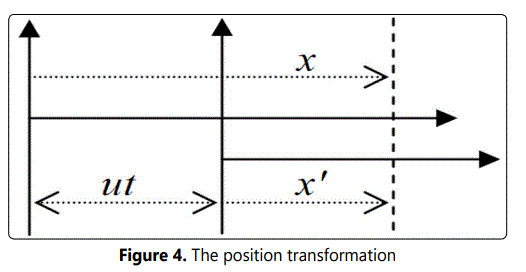
The equations (10) somehow distinguish lengths and times in the two frames, depending on their mutual motion. Not only that this dependence cannot be physically explained, but lengths and times would depend on the speed, as their ratio! Moreover, the lengths depend on a given time beginning, as well as times – on the adopted frame position. Unlike the time possibly calculated from the frame overlap, the position of a chosen frame cannot be referred to any privileged location. The relative time, dependent on the object position – in the arbitrary frame, is undetermined!! Not only that the reference frames are arbitrary, but represent the mere mental constructs. There is not any logic by which their mutual motion can influence lengths and times, irrespective of any motion of the passive observers.
The ratio of the two equations (10) gives the relativistic speed transformation (11). Here v & v’ denote the object speeds in the two frames, and u – their mutual motion. The usual speed difference is here divided by the nominator less from unit, thus being artificially increased. Applied to light – as the object, this equation turns into the identity: c’ = c. Following through the sequence of inconsistencies, this is the pretext for the same speed of light at all (inertial) frames. This opinion is here already denied by the sequence of empirical facts. v’ = x’/t’ = (v – u)/(1 – vu/c2 ) (11)
Avoiding or exceeding all these speculations, Hobble’s ratio of the distance and speed at the mutual motion away of two celestial bodies just understands the unique cosmic time. Some local times, deviating from the absolute one, are theoretically inconceivable and practically impossible. The real transformation of the position (Fig. 4), concerning the absolute time, is the only acceptable alternative. Namely, the positions of an object in the two frames differ no more or less but for the mutual distance covered after the initial frame overlap. In the unique space and time, this is the only reasonable relation.
General Relativity
Despite the sequence of formal inconsistencies above clearly presented, the restriction to a uniform rectilinear motion is the unique declared difficulty of special relativity. Alike inertia being generalized to the force action, Einstein tried to generalize his special to general theories. After some wander through chaotic speculations, he lost from view the initial problem. Owing to the kinetic and dynamic forces out of relativity, he returned to the static laws. On the basis of their possible balance, inertia is reduced to gravitation!? The radial field around a body is copied into the super-spherical space, along t-axis.
Alike gravitation projected on a slope, it itself is thus treated as the similar projection of some super-force acting from the cosmic center (Fig. 5). The field around a body is illustrated by the spatial curvature, as the local deformation of space, in the form of the funnel. At the interstellar space of the regular spatial curvature, such the projection equals to naught.
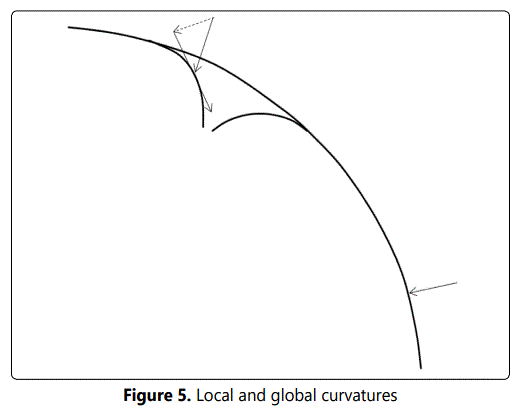
Without any valid criteria, this concept is widely taken as the theory of gravitation. In the equivalent form, it speaks nothing about the essence of gravitation, but only further mystifies this phenomenon. If the formal mistakes and/or inconsistencies be excluded, there is no any reason by which its results will differ from the classical ones. At least accidentally, this analogy announces the radial cosmic expansion along temporal axis [3], irrespective of the red shift lately noticed.
Albert Einstein
In these times failing in the authorities of any kind, Einstein is an unquestionable scientific authority, if not in general, then in the modern physics at least. Instead of the resort to the praise, a brief and unbiased, as much as possible adequate valorization of his scientific contributions need be here presented. Avoiding unnecessary repetitions, the arguments rely on the above text and its references, also having in view the scientific criteria. Unlike majority of the other scientists, being famous concerning their unquestionable contributions, Einstein is celebrated with respect to his controversial views.
Apart from the photo-electric effect, Einstein deserved the leading position by the three ideas at least: the fourth dimension, curvilinear space and equation: w = mc2 . Although the former two ideas were not originally his, Einstein emphasized and affirmed them self-confidentially. The indirect and complicated derivation of his equation seems to be accidental, resulted from the random formal procedures. Apart from the considerable simplification of this derivation, a direct its inference has been also presented in [2]. Not only that this equation is thus affirmed, but its convincing interpretation is finally enabled.
Unfortunately, none of the three mentioned ideas or results had been fully elaborated and applied by Einstein. At least in principle, the fourth axis is directly colliding with relative time. According to the tensor form of Maxwell’s equations [1], time is a real metrical axis. The probable restriction of the medium of light to the spatial gravitation excludes its temporal propagation. The relative time calls in questions its physical sense and reality. Not only that this concept is fantastic and arbitrary, but cannot be argued by any physical reason. At least some of its contradictions are here already clearly presented.
The idea of curvilinear cosmic space has been also unfinished. Though the Riemannian frame excludes the surrounding cosmic background [3], the modern cosmologists understand it. Even the surrounding cosmoses are expected in the background thus tacitly predicted. This inconsistency of the followers, not trying to finalize Einstein’s principal ideas, may be understood: the famous authorities would not make logical mistakes or give incomplete ideas. His equation has not been interpreted so far. Instead of its undefined application, it can be ascribed to the massive particles, unlike similar Plank’s relation for photons.
At least a part of Einstein’s fame relies on the arbitrary spatial orientation, as the main his failure. It implies the same speeds of light at all so called inertial reference frames, declared equivalent by the principle of relativity. Without sufficient vision of physical processes, as the corrective criterion, the formal calculations are prone to various mistakes or inconsistencies. In the final instance, the relativities of lengths and times are unacceptable at all. As the needed condition for these views, the vacuum medium had been explicitly negated. Imposed by the authority, this view still hinders the further development.
Let us also emphasize some Einstein’s methodological errors, mainly reducible to typical inconsistencies. Such is the arbitrary substitution of two similar math expressions by their geometric average. The average of two Doppler’s effects he applied to the cosmic red shift of light [3]. The opposite signs in the two field tensors he substituted by the imaginary unit [1]. In the opposite sense, the set determinant (8b) has been distributed between the two sets. The parallel EM phenomena (7b) were already understood. By the explicit negation of the medium, Einstein imposed the kinematical relativity.
The incomplete or doubtful principal views may be added. Apart from the static interactions, the relativity can be applied to the special cases of some distinct forces. Concerning two Mach’s ideas, Einstein chose the frame equivalence as the worst one. The unexplained kinetic induction was neglected. The lengths and times dependent on the moving observers fail in any explanation. The dependence of the relative time on the adopted spatial frame has not been noticed even by the numerous opponents!? The wide acceptance of relativity is not strictly founded, but imposed in the absence of the competent critiques.
By mess of the notions, Einstein confused the opponents. He substituted the two EM constants by the abstract speed of light, thus pushing back a vacuum medium at least. The absolute light propagation through the medium, irrespective of the instruments and observers, he substituted by the invariant relative speed. The temporal cosmic process, independent of the transverse spatial motion [3], he ascribed to the light propagation in a given spatial direction. The same speeds of light in the local cosmic situations imposed the additional confusion. All these facts taken together made the full mess in the theory.
Substitution of some theses is also frequent. The ellipsoidal electric field deformation around a moving charge, caused by the longitudinal dynamic induction [1], he ascribed to the increased transverse fields, by distribution of the factor g. The incomplete medium draw by the running water he ascribed to the relativistic speed transformation. Instead of the stronger structural stability, the shorter lives of speedy mesons are ascribed to the relative time. The two former cases at least do not obey the numerical relations. In the final instance, there cannot be even enumerate all Einstein’s inconsistencies.
Results
The relativity, as a postulate, is valid for the static forces only. Owing to various reasons, it cannot be applied to the kinetic and dynamic processes. The relativities of distinct physical forces are restricted to the special technical situations. The same speed of light in a class of the frames, implied by the relativity principle and additional inconsistencies, cannot be anyhow understood nor explained. The generalization of the local to arbitrary orientation is exaggerated.
A sequence of the wave effects somehow contradicts to the relativistic views. At least one of them directly denies the arbitrary orientation of light. The navigational system (GPS) could not take into account the relativistic views.
The relativistic transformations are founded on the sequence of theoretical mistakes and inconsistencies. The dependence of the relative time on the adopted spatial frame is especially unacceptable and must be refuted forever.
Imposing relativity of lengths and times, the special theory lost from view the orientation. Reducing gravitation to geometry, the general theory did not generalize special one. These two theories only mystify the physical relations.
Not only that the restriction to so called inertial frames has not been exceeded, but its definition understands in advance a relevant reference frame. Going into the opposite direction, this opinion terminates in the local orientation.
Starting from the unique (absolute) reference – as the thesis, and arbitrary orientation – as antithesis, Mach’s local orientation in relation to the predominant material surroundings – as the synthesis, satisfies all the practical situations.
Conclusion
Between Earth and Sun, Copernicus chose the latter referent body. Newton similarly preferred the wider surroundings to the water container. Amongst the two Mach’s theses, of the local or arbitrary orientation, Einstein took the latter one. Not only that the orientation is thus overlooked, but disabled. The remaining local orientation, relative to a dominant mass, with some draw of the frame by other masses, satisfies all the practical situations. Although the rotation of Earth does not influence the satellites, its revolution firmly carries their orbits around Sun.
References



